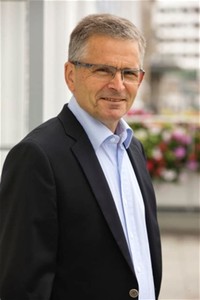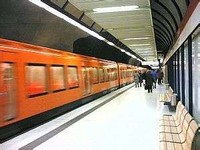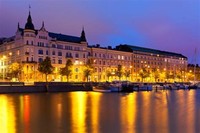Facts about Helsinki

Like in all Finnish municipalities, the city council in Helsinki is the main decision-making organ in local politics, dealing with issues such as city planning, schools, health care, and public transportation.

The city is also called Stadi (from the Swedish word stad, meaning city) in the local slang, and Hesa by people who don't live in Helsinki.

Helsinki also features several buildings by the world-renowned Finnish architect Alvar Aalto (1898-1976), attributed as one of the pioneers in functionalism.

The Center Party of Finland, despite being one of the three major parties in nationwide politics, has relatively little support in Helsinki as it does in most other big cities.
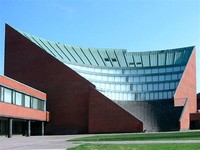
The Academy of Еbo, the only university in the country at the time, was also relocated to Helsinki in 1827, eventually becoming the University of Helsinki.

Engels' neo-classical plan of the city center later gave Helsinki the epithet The White City of The North.
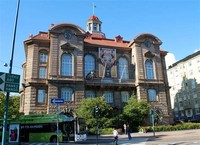
The biggest historical museum in Helsinki is the National Museum of Finland, which displays a vast historical collection from prehistoric times to the twentieth century.

Helsinki has 190 comprehensive schools, 41 upper secondary schools, and 15 vocational institutes.
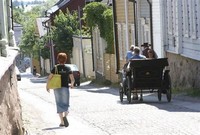
The Swedish name Helsingfors comes from the name of the surrounding parish, Helsinge (source for Finnish Helsinki) and the rapids (in Swedish: fors), which flowed through the original town.

Helsinki is also the home of the Linnanmдki amusement park, which features five roller coasters and many other rides, including the world's first Intamin ZacSpin rollercoaster.

The Helsinki Metropolitan Area Council manages traffic to the surrounding municipalities of Espoo, Vantaa, and Kauniainen.

Aalto's buildings, such as the headquarters of the paper company Enso and the concert and congress house Finlandia Hall, have sparked much debate amongst Helsinki's inhabitants.

Helsingfors is the original name of the modern city of Helsinki, and is still the official Swedish name for the city.
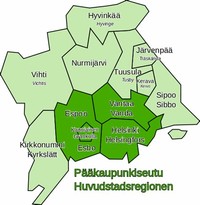
The Helsinki metropolitan area contributes approximately one third of the Finnish gross domestic product.
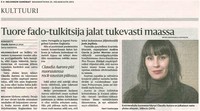
The biggest subscription newspaper in Finland and the Nordic countries, Helsingin Sanomat, is published daily out of Helsinki.
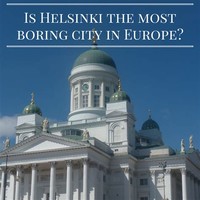
Helsinki is also known for its active ICT and digital cultures scene in Greater Helsinki.

Helsinki is also unique for a city its size in that there is no part of the town that could be deemed as "slum," or explicitly inhabited by the poor.

Helsinki has three major theaters: The Finnish National Theater, the Helsinki City Theater, and the Finland Swedish Svenska Teatern.

Helsinki hosts fairly successful local teams in both of the most popular team-sports in Finland: football and ice hockey.

Traditionally, the conservative National Coalition Party (Kokoomus) has been the biggest party in Helsinki's local politics, with the Social Democrats being the second biggest.
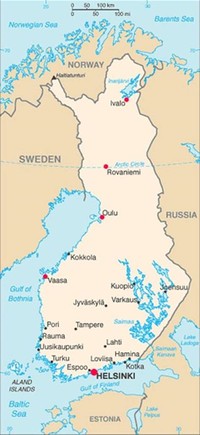
Helsinki is situated on approximately the same latitude as Anchorage, Alaska, making it the second northernmost capital in the world after Reykjavнk, Iceland.

The economy of Helsinki is primarily service-based, having gradually moved away from heavy industry.

Helsinki's second airport, Malmi Airport, is generally used for general and private aviation.

Helsinki is also the home for the Helsinki Stock Exchange, owned by the OMX corporation.
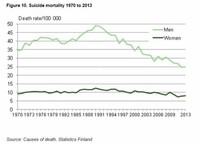
The latter's support has been steadily declining over the years, most likely because of the diminishing proportion of Swedish speakers in Helsinki.
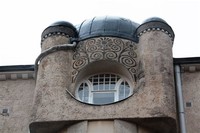
The master of the Finnish Art Nouveau was Eliel Saarinen (1873-1950), whose architectural masterpiece was the Helsinki central railway station.

Renowned architects such as Eliel Saarinen created Utopian plans for Helsinki, but they were never fully implemented.

Public transportation is mostly managed by Helsinki City Transport, the city's transportation authority.
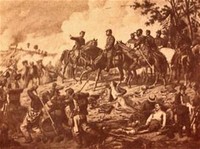
After the tide of the war turned against the Red forces, German troops, fighting on the same side with the Finnish White Guard, recaptured Helsinki in April.

Most large Finnish companies have their head offices and other important functions in the Helsinki metropolitan area, primarily due to international connections, logistics networks, and workforce availability.

Helsinki's Art Nouveau style is also featured in large residential areas such as Katajanokka and Ullanlinna.

At the same time the government secretly briefed its white-collar workers to make producing these—often clearly Soviet-negative films—in Helsinki as hard as possible, due to diplomatic pressure from Moscow.

Helsinki spreads around a number of bays and peninsulas and over a number of islands.

Locals often spend sunny days at the Hietaniemi Beach (often simply called Hietsu), Helsinki's main beach in the district of Tццlц.

During the coldest months of the winter it is common for Helsinkians to go for walks on the frozen sea.

Much of Helsinki outside the inner-city area consists of postwar suburbs separated from each other by patches of forests.

Many of Helsinki's main attractions are also related to the sea, including the Suomenlinna naval fortress, a UNESCO World Heritage site, and Seurasaari Island with its parks and open-air museum.

Information technology and financing sectors form the backbone of Helsinki's economy.

Air traffic is handled primarily from the international Helsinki-Vantaa Airport, located approximately 11.8 miles north of Helsinki's downtown area, in the neighboring city of Vantaa.

The Helsinki Metro, opened in 1982, is so far the only subway system in Finland.

Helsinki's neoclassical buildings were often used as a backdrop for scenes set to take place in the Soviet Union in many Cold War era Hollywood movies.

Another major historical museum is the Helsinki City Museum, which introduces visitors to Helsinki's 500-year history.
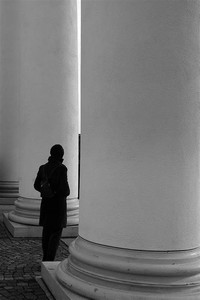
Carl Ludvig Engel (1778-1840) designed several neo-classical buildings in Helsinki after being selected to plan a new city center all on his own.

In winter, Helsinki's northern position makes it dark for most of the day, leading to a tradition of impressive lighting, such as the classic Aleksanterinkatu's Christmas street (Joulukatu).

Population density in certain parts of Helsinki's inner city area is high, but as a whole Helsinki ranks as quite sparsely populated in comparison to other European capital cities.

A narrow, 6.2-mile-long Helsinki Central Park that stretches from the inner city to the northern border of Helsinki is an important recreational area for the residents.

The University of Helsinki also has several significant museums, including the University Museum and the Natural History Museum.

After the White victory, approximately 13,300 Red soldiers and collaborators were confined on the former naval fortress island of Suomenlinna in Helsinki.
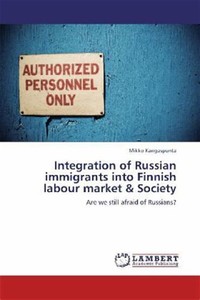
Integration of foreign immigrants into society, infrastructure development, production of public services, and cooperation between Helsinki and its suburbs are seen as major future challenges for the economic development of the region.

Many of Helsinki's main attractions are also related to the sea, including the Suomenlinna naval fortress, a UNESCO World Heritage site, and Seurasaari Island with its parks and open-air museum.

The Helsinki urban region contains the neighboring cities of Espoo, Vantaa, and Kauniainen, which are together called the Capital Region.
The currency used in Helsinki is the Euro. Helsinki is the capital of Finland. If you are traveling to Helsinki, you will need to exchange your currency for the Finnish Euro. You may exchange your money for the Euro at most Helsinki banks or at specialized stores called Foreign Exchange Bureaus.

